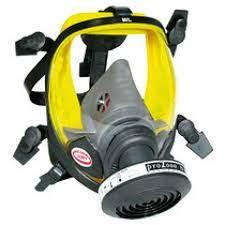Audio/video equipment racks provide the foundation for home theater and multi-room audio systems. While basic racks serve the fundamental purpose of housing components in an organized manner, custom accessories can significantly enhance the functionality of any AV setup. This blog will explore various rack accessories and how they can improve usability, cable management, ventilation, and overall system performance.
Racks and Cables
One of the most important aspects of any audio/video system is effective cable management. Untamed cables quickly become clutter that blocks airflow and makes troubleshooting difficult. Custom rack-mounted accessories specifically designed for cable management help keep things tidy and functional.
Cable trays mount inside or outside of racks to provide dedicated channels for routing power cords, speaker wires, network cables, and other connection lines. They keep cables separated and organized while also allowing easy access for adding or replacing components. For tighter spaces, wrap-around cable coils secure extra length without taking up additional room.
Professional-grade rack drawers contain various cables, connectors, tools, and manuals. Most slide smoothly on rails for accessibility. At the back of racks, vertical cable managers conceal wiring and pop-out sections make cord routing simple. Snap-on covers finish the look and provide cable containment through small cut-outs. Together, these addons tame the mess of cables that inevitably comes with complex home theater setups.
Ventilation Considerations
When components are compressed tightly inside an AV rack, cooling becomes critical. Poor ventilation leads to overheating which decreases reliability and can even cause failures over time. To maximize airflow, many installers choose open frame or vented shelf racks that allow heat to dissipate efficiently.
Mesh shelves provide additional breathing space between components stacked one above the other. Fan panels attach directly to racks, drawing warm exhaust air out from the front. Smart fan controllers respond to temperature changes to optimize cooling. For especially dense equipment configurations, modular ventilation panels include air vents that channel breezes through restricted areas within the rack.
Together with mindful component placement based on relative heat output levels, customized cooling solutions prevent issues down the road from heat buildup while extending equipment lifespans. Whether implementing active or passive methods, prioritizing ventilation makes a rack-based system much more durable.
Remote Control Consolidation
Operating home theater components from multiple handheld remotes quickly becomes tedious and disorganized. Custom rack-mounted remote control stations solve this problem elegantly. RF or IR receivers consolidate control into a single universal remote that communicates with all devices.
More advanced stations serve as smart remote panels with large multi-touch displays. These act as unified on-screen interfaces for switching sources, adjusting volume levels, tuning channels, and launching apps. Full software control means simpler setups, power-on automation, and macro programming for one-button activities like watching a movie. Integrated microphones even allow voice commands in some models for hands-free operation.
Mounted discretely on the rack face or inside a sliding drawer, custom remote solutions reduce clutter while providing unified easy access to control every part of an entertainment system. When designed for wall mounting as well, they conveniently free up furniture surfaces typically occupied by heaps of controllers. Clean operation becomes as simple as touching an intuitive touchscreen.
Cable Integration
While most modern components come with detachable rack ears for installation, custom adapters integrate connectivity right at the rack. Power injection bridges keep internal cabling concealed by routing outlets near equipment mounting points. Fiber, HDMI, Ethernet and other header cables insert directly into panels behind components instead of dangling loosely.
Sophisticated distribution interfaces even break out connections to wall plates or structured wiring closet patching panels located remotely. This integration hides power supplies, minimizes cable lengths between components, and conceals wiring in places like home theaters with open floor plans lacking rear access for fishing cables behind walls or furniture. End-to-end cabling remains robust yet disappears from view.
Equipment Mounting Options
When selecting rack-mountable gear, compatible sizing presents unique challenges in densely packed setups. Custom racks include tool-less shelves, mounting rails, shelf supports and spacers for flexible placement of various equipment. Deep vertical rack rails accommodate oversized subwoofers and amplifiers.
Tilting shelves angle components outward for simplified front access where space may be limited. Pull-out brackets slide devices in and out like drawers. Steel construction ensures strength to securely hold heavier devices vibrating under powerful bass. Modular configurations allow customizing support points based on specific product sizes and weights.
Purpose-built enclosures even install cleanly within built-in wall units. Pass-through cupboards route cables while displaying components attractively. Doors close to hide mess while cut-outs allow safe ventilation. These installation-friendly extras make the most of constrained spaces to rack any combination and shape of gear.
Special System Requirements
While the above accessories suit general home entertainment rack needs, specialized applications require customized solutions. Multizone distributed audio installations spread equipment throughout homes across long cable runs. Purpose-built distribution racks incorporate amplifier racks, connectivity centers and control points into consolidated rack furniture.
Home theaters with above-seating height-constrained ceilings call for compact vertical form factor arrays. Short depth racks mount side-by-side for full sized gear that won’t normally fit within height limits. Service racks integrate patching between in-wall and rack-based equipment with cable pass-through plates.
Industrial environments demand heavy duty upgrades. Ruggedized rack frames, locking shelves, tempered glass cabinet doors and secure mounting hardware create enterprise-grade installations. Wheeled mobile racks hold project studios or production equipment for location flexibility. These specialty designs ensure reliable, well-organized systems for unique circumstances beyond average home theaters.
Custom Fabrication
While pre-fabricated components cover common requirements, highly customized solutions call for skilled fabrication. Experienced manufacturer partners produce fully tailored enclosures, panels and components. Blueprints define ventilation schemes, cut-outs, rack profile modifications and unique mounting patterns.
Sheet metalworkers plasma cut rigid panels from steel or aluminum alloys. CNC routers mill racks, brackets and shelving from solid material billets like wood, plastic or aluminum extrusions. Electronics shops integrate control interfaces, cable runs and power management into finished interfaces. Multidisciplinary builders coordinate mechanical, electrical and software elements into fully realized designs matching any vision.
Serving custom acoustic treatments, lighting controls, speaker stands and rack concealment furniture, bespoke fabrication opens endless possibilities. Complex integrated systems housed in architectural racks become showpiece focal points. Whether inspired by high-end commercial installations or original creative concepts, personalization through custom manufacturing delivers optimized ultra-functional solutions beyond off-the-shelf components.
Conclusion
While ordinary blank racks suit basic needs, incorporating specialized accessories significantly extends capabilities and usability of home theater and whole home AV systems. Thoughtful cable management, ample ventilation, streamlined control interfaces and flexible equipment mounting optimize performance while preserving neat organization. Advanced distribution tools incorporate full-scale systems within spatial constraints.
Custom fabrication realizes entirely unique visions where standard parts fall short. By catering rack layouts specifically to application spaces, components and owners’ desires, perfectly engineered systems evolve into integrated user experiences far beyond ordinary. Whether selecting tailored pre-fabricated accessories or designing from scratch, customizing racks unleashes endless potential to enhance functionality throughout entertainment system deployments.
Read More:- http://web-lance.net/blogs/post2459





